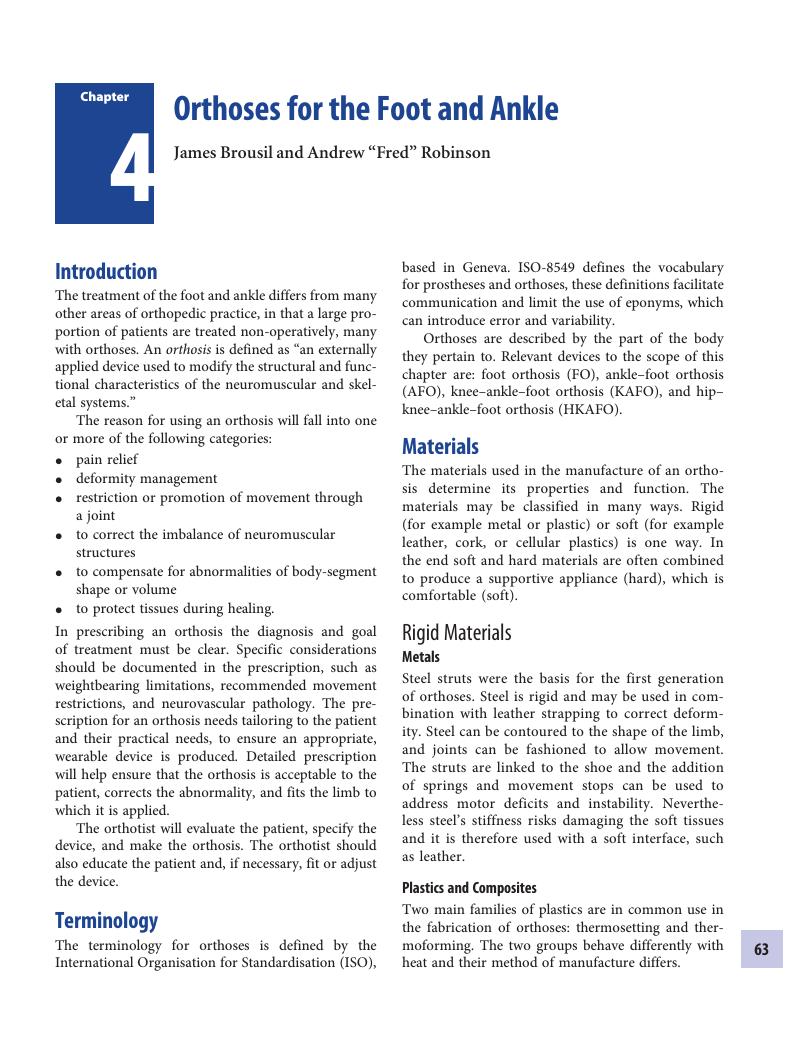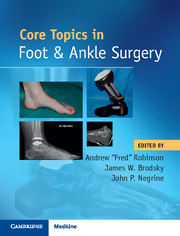Book contents
- Core Topics in Foot and Ankle Surgery
- Core Topics in Foot and Ankle Surgery
- Copyright page
- Contents
- Contributors
- Preface
- Abbreviations
- Chapter 1 Clinical Examination of the Foot and Ankle
- Chapter 2 Biomechanics of the Foot and Ankle
- Chapter 3 Radiology of the Foot and Ankle
- Chapter 4 Orthoses for the Foot and Ankle
- Chapter 5 Amputations, Prostheses, and Rehabilitation of the Foot and Ankle
- Chapter 6 Forefoot Pathology
- Chapter 7 Midfoot and Forefoot Arthritis
- Chapter 8 Ankle and Hindfoot Arthritis
- Chapter 9 The Cavus Foot
- Chapter 10 Adult Acquired Flat Foot Deformity
- Chapter 11 Sports Injuries of the Foot and Ankle
- Chapter 12 Ankle Arthroscopy
- Chapter 13 Foot Arthroscopy and Tendonoscopy
- Chapter 14 Heel Pain
- Chapter 15 Disorders of the Tendo Achillis
- Chapter 16 Rupture of the Tendo Achillis
- Chapter 17 Benign Tumors of the Foot and Ankle
- Chapter 18 Malignant Tumors of the Foot and Ankle
- Chapter 19 The Diabetic Foot
- Chapter 20 The Pediatric Foot
- Chapter 21 Fractures and Dislocations of the Ankle
- Chapter 22 Fractures and Dislocations of the Hindfoot and Midfoot
- Chapter 23 Fractures and Dislocations of the Forefoot
- Index
- References
Chapter 4 - Orthoses for the Foot and Ankle
Published online by Cambridge University Press: 29 March 2018
- Core Topics in Foot and Ankle Surgery
- Core Topics in Foot and Ankle Surgery
- Copyright page
- Contents
- Contributors
- Preface
- Abbreviations
- Chapter 1 Clinical Examination of the Foot and Ankle
- Chapter 2 Biomechanics of the Foot and Ankle
- Chapter 3 Radiology of the Foot and Ankle
- Chapter 4 Orthoses for the Foot and Ankle
- Chapter 5 Amputations, Prostheses, and Rehabilitation of the Foot and Ankle
- Chapter 6 Forefoot Pathology
- Chapter 7 Midfoot and Forefoot Arthritis
- Chapter 8 Ankle and Hindfoot Arthritis
- Chapter 9 The Cavus Foot
- Chapter 10 Adult Acquired Flat Foot Deformity
- Chapter 11 Sports Injuries of the Foot and Ankle
- Chapter 12 Ankle Arthroscopy
- Chapter 13 Foot Arthroscopy and Tendonoscopy
- Chapter 14 Heel Pain
- Chapter 15 Disorders of the Tendo Achillis
- Chapter 16 Rupture of the Tendo Achillis
- Chapter 17 Benign Tumors of the Foot and Ankle
- Chapter 18 Malignant Tumors of the Foot and Ankle
- Chapter 19 The Diabetic Foot
- Chapter 20 The Pediatric Foot
- Chapter 21 Fractures and Dislocations of the Ankle
- Chapter 22 Fractures and Dislocations of the Hindfoot and Midfoot
- Chapter 23 Fractures and Dislocations of the Forefoot
- Index
- References
Summary

- Type
- Chapter
- Information
- Core Topics in Foot and Ankle Surgery , pp. 63 - 81Publisher: Cambridge University PressPrint publication year: 2018
References
- 1
- Cited by



